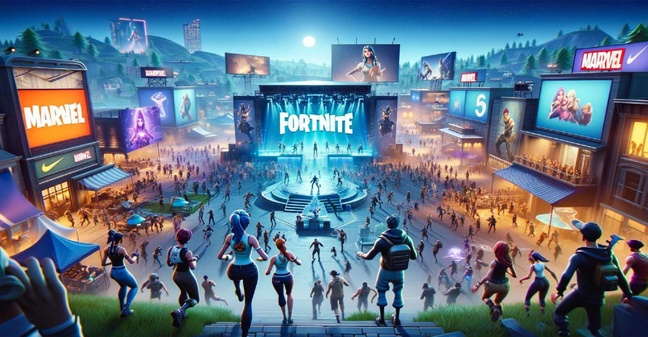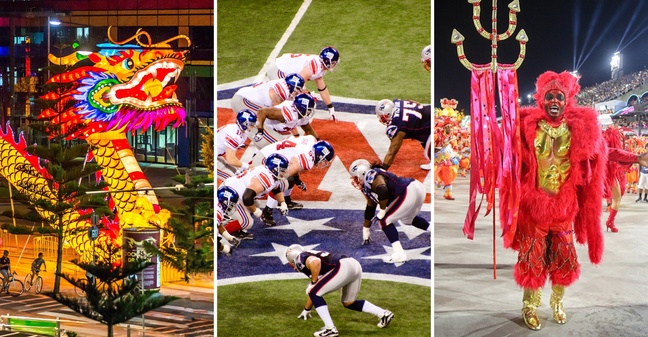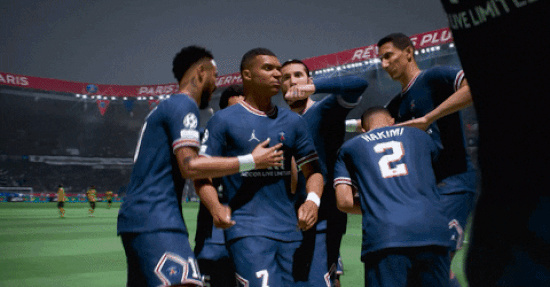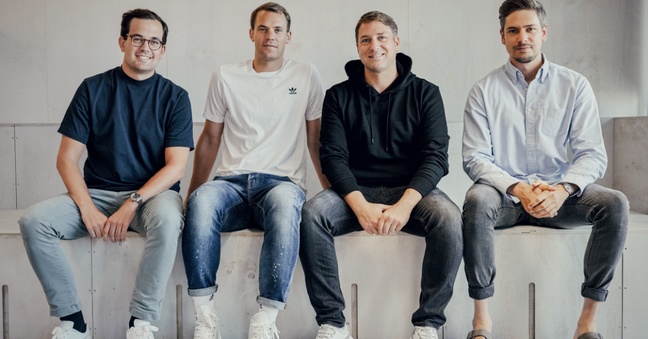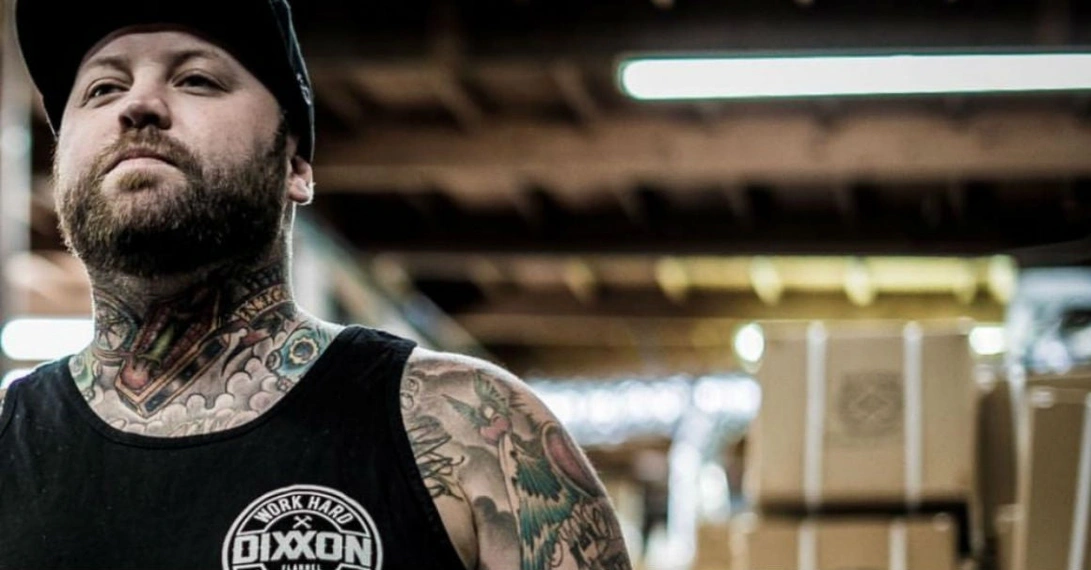
When it comes to boosting awareness and revenue, drops and collabs are standard marketing tools on the streetwear scene. However, the practice is pretty unique when you’re dealing flannel shirts to bikers and fans of low-rider culture. With “Dixon Flannel” Danny Dreyer, however, has dropped and collab’ed his way to over USD 20 million annually. We took a deep dive on his business strategy and how he leverages Instagram and other platforms.
“I needed to figure out a way to get paid while I was sleeping,” says Dixxon founder Danny Dreyer in an episode of the business podcast “The Answer Is Yes” that appeared in December 2019. “My goal was to make 300 or 400 dollars more a month.” In 2013, Dreyer was still working in his father’s bike shop in California and looking for suitable work clothes. “I was searching for flannels, but I couldn’t find any good ones. They mostly wash up super crappy. They shrink really bad, they wrinkle really bad. They’re only good the first time you wear them really,” he says.
Dreyer manages to find a manufacturer in Los Angeles with a higher-quality thread, sews his own logo atop and then sells the “branded” shirts out of the trunk of his Scion. His primary place of business initially is at low-rider get-togethers and bike races. It’s the birth of “Dixxon Flannel.”
Part-time hobby to full-time job
A few months later, he launches his online shop. For the next two years, the status quo stays the same: 25 orders a day come in on average and moving trucks deliver shirts to his door. He then finally locates a producer in China who’s product he’s happy with for his first custom design. “The first two years were a kind of market test for us,” says Dreyer. “I learned that there is a viable audience for us. I also saw what my customers wanted and I figured out which improvements I wanted to make.” He says that his self-designed shirts boast a higher degree of quality than the competition and feature a wider range of colors. His line now includes boxer shorts, socks, women’s and youth sizes and dress shirts, in addition to flannels.
“I remember the day before our first big custom launch, I was thinking I hope this works, because everything we own is right there. We’re 70 grand in the hole, all in this. This is everything,” recalls Dreyer. “That next day we did 60 grand in sales.” He said that he fortunate enough to have had a loyal community on both Facebook and Instagram back in 2015, and both were important channels for informing fans about new products.
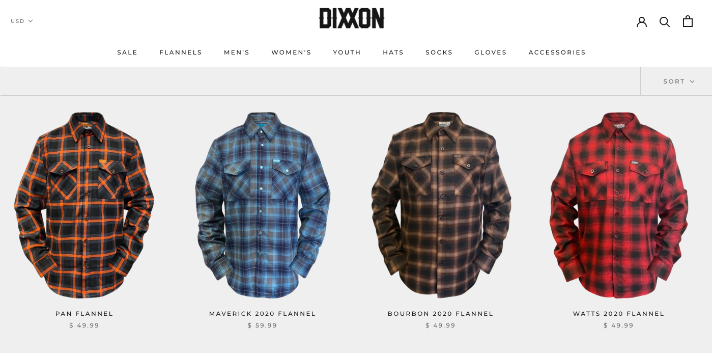
Der Webshop von Dixxon Flannels
The drop was never an intentional strategy per se, but rather a necessity. Since he only releases two flannels at a time, he informs his community about the upcoming release, which in turn boosts revenue on day 1. Since he began launching his own shirts, every model has been given a name. This boosts recognition among customers and make it easier to rerelease successful earlier designs, such as the red, black and white “Hammer,” the very first custom design.
Dropping the flannels
Dreyer releases new designs to his online shop at 5 PM Pacific time. There are no more than three drops a month, each of which feature two shirts. To plug the upcoming drop, he publishes a series of Instagram posts to his some 200K followers. The publishing plans on the past two releases have mirrored each other: The first post drops three days before release and features a model in the new shirt. The post copy relays the date of the drop. Another product post follows the day before the drop, while a third and final post is published to signal the start and simply states “Live Now.”
The 150+ comments give an idea of just how fast customers have to act if they want to land a new design, with many users lamenting the fact that several sizes are sold out after just 20 minutes. For each model there are anywhere from 1000 to 7000 items produced per size, meaning that every sold-out model generates at least 50K in revenue (factoring in the 50-dollar price tag). If a model sells out, Dreyer does not restock immediately. The highly sought-after items are re-dropped after enough time has passed to sufficiently boost demand.Close-knit Community
On top of the strategic posts showcasing the shirts pre-drop, Dreyer regularly posts relevant memes and photos from the community to Instagram to keep the brand as present as possible among the community. Hundreds of users tag the company account every week with posts of themselves wearing Dixxon. “We don’t use any paid models. We only use customer-submitted photos,” says the founder. According to InfluencerDB, an online analysis tool, followers of the Dixxon brand are primarily male, American and between the ages of 18 and 45, the majority of which probably have close ties to the biker scene or are at least fans of the style.
He hopes to gain followers from these “scene fans” through various adjacent collaborations. For example, Dixxon designed a flannel shirt for US worker shoe brand “Thorogood” as well as for bike parts manufacturer “Performance Machine”. Furthermore, Dixxon also has special collections, such as the “Nightmare on Elm Street” and “Friday, the 13th” collections. “We can make stuff for people who don’t know how to make it. We’re pulling up to their ship, just for a little while, jump in, share all their customers and then just as fast we jump back on ours and we take off,” says Dreyer about the collab strategy.
On Ebay for 100 bucks
The growth Dixxon has obtained on social so far (Dixxon counts 80K fans on Facebook) is driven by ad campaigns on the big platforms. The ad campaigns currently running on Facebook and Instagram appear to be geared towards new customer acquisition and showcase the brand’s various styles. Another significant marketing tool Dixxon employs is the newsletter. No wonder either given that email campaigns are perfect for limited goods. Customers know that they need to act fast to avoid FOMO on the latest shirt. The newsletter keeps fans and previous customers abreast of the latest news and drops. One mail is sent out before each product launch, and Chris Vallely, the eCommerce manager at Dixxon, says these mails regularly generate USD 10,000 to USD 20,000 in revenue. The first campaign had a 30% open rate and a 12% click rate. Today such email campaigns are responsible for up to 25% of annual revenue.
An ulterior effect of the hype surrounding the limited releases are sky-high resale prices on platforms such as Ebay. Here you can find especially limited editions or rare sizes for well over a 100 bucks. “I’ve seen shirts for anywhere from 200 to 500 bucks,” says Dreyer. But he says that he prefers to keep prices stabile, and to simultaneously expand the community and the number of items slowly. “This way our shirts still remain scarce,” he says.













